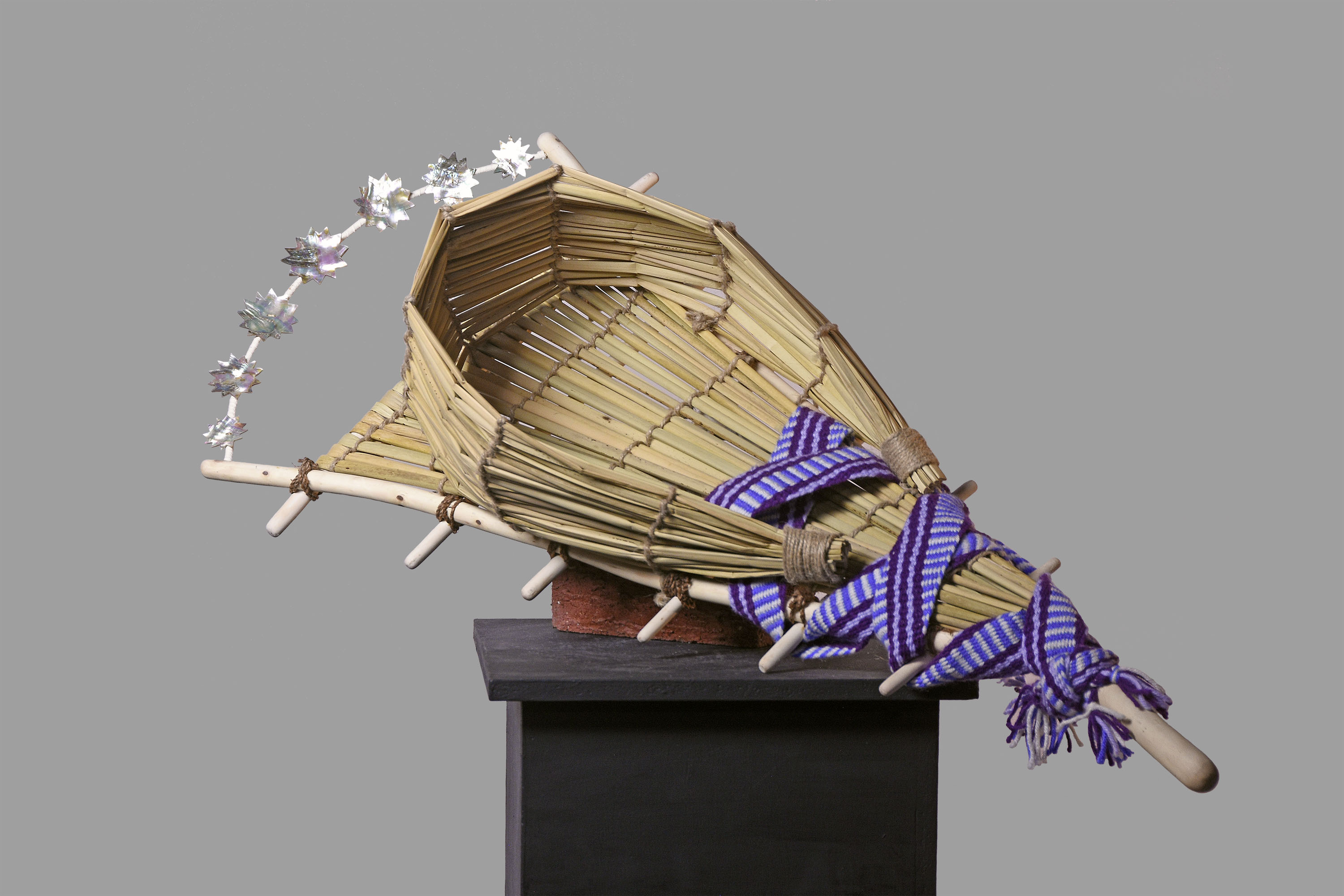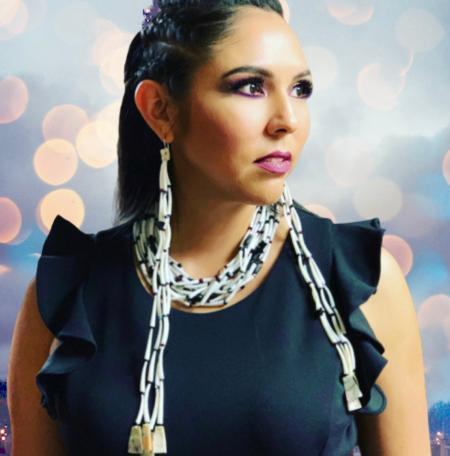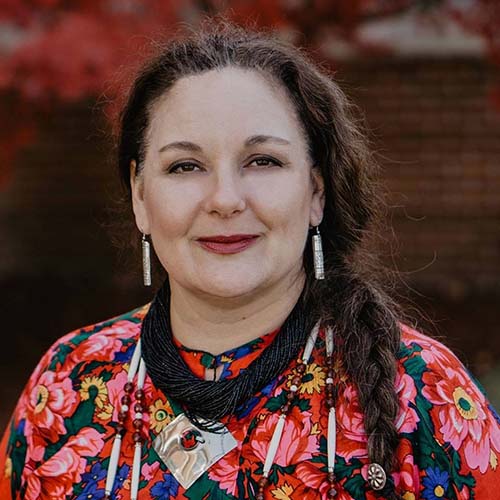
- Details
- By Nanette Kelley
San Luis Obispo County, Calif. & Santa Fe, N.M. — Place-based artist Leah Mata Fragua (Northern Chumash) is the next guest artist in the new virtual educational art series “Collections Spotlight.”
Collections Spotlight is a partnership program between the Ralph T. Coe Center for the Arts in Santa Fe and First American Art Magazine (FAAM). The interactive online discussions bring together Native American artists and scholars to discuss art works in the Coe Center collection. The virtual Zoom format events are free and open to the general public.
“We were in conversation with America Meredith at FAAM about developing some kind of programing, and she had the brilliant idea to offer in-depth conversations with artists about pieces from the Coe collection and their own work and practice. The result has been really wonderful and meaningful for us all,” Ralph T. Coe Center for the Arts Curator Bess Murphy said.
Though the series was born out of the pandemic and the resulting closures in New Mexico, Murphy suggested that these events may continue after the center reopens.
“Perhaps we could even eventually add in an in-person element to these in the future,” she said.
The next online event features Northern Chumash artist Fragua (yak tityu tityu yak tiłhini (the people of tiłhini), Northern Chumash Tribe). Mata Fragua was awarded the Smithsonian Artist Research Fellowship, and most recently, the 2020 Barbra Dobkin Fellowship at the School of Advanced Research. She has a B.A. in Anthropology and M.A. in Cultural Sustainability. She’s currently a professor with the Institute of American Indian Arts, Indigenous Liberal Studies department.
 Photo by Leah Mata Fragua Mata Fragua refers to herself as a “place-based artist.”
Photo by Leah Mata Fragua Mata Fragua refers to herself as a “place-based artist.”
“Materials found in your bioregion are reflective of your cultural intellectual knowledge of place and allow you to understand how to use those materials,” she said of her artistic discipline.
The Northern Chumash bioregion and traditional territory is California’s Central Coast in the San Luis Obispo County region.
Because her people were impacted in the early days of the California Mission system––specifically by Mission San Luis Obispo de Tolosa and Mission San Miguel Arcángel––some of the ill effects were lost techniques required to make Chumash regalia and baskets.
“I started out making dance dresses and I had few resources other than notes from my grandmother,” Mata Fragua said. “I’m trying to put the pieces back together to make it more authentic.”
However, finding authentic examples of Chumash art to study isn’t easy. Although she’s an academic, Mata Fragua attributes this problem to a lack of accessibility, such as pieces of historical regalia held in France and Spain, as well as challenges associated with accessing collections through gatekeepers.
“Being able to access collections is a privilege, it’s not something someone can do unless they have resources” she said, adding, “There is a disconnect from our own material culture.”
Another problem that is specific to the cultural sustainability of California tribes was the Pan-Indianism movement that saw protests by Native peoples not indigenous to California. The presence of those who were products of the Indian Relocation Act, as well as the media coverage of American Indian Movement protests, resulted in the outside influence of relocation Indian dress designs on California tribes.
“Alcatraz erases us,” she said, before adding: “I can say it ‘erases us’ without dismissing its importance, but it’s an important piece of history that does not help California Indians.”
Her unease regarding the Occupation of Alcatraz stems from the fact that it led to an absence of local tribal representation, including their regalia styles in mainstream media. “Relocation Indians overshadowed us. Even in our home state, relocation Indians are more visible,” she said. “I’d like to hit the reset button on our work and rid our dresses of outside influences.”
Mata Fragua will discuss Chumash art and regalia in the Coe Center collection with America Meredith and curator Bess Murphy Tuesday, July 21 at 4 p.m. CST.
Free registration is open to the public for this online event.
More Stories Like This
Vision Maker Media Honors MacDonald Siblings With 2025 Frank Blythe AwardFirst Tribally Owned Gallery in Tulsa Debuts ‘Mvskokvlke: Road of Strength’
Zuni Youth Enrichment Project and Partners at Ho’n A:wan Productions Launch 8th Annual Delapna:we Project
Chickasaw Holiday Art Market Returns to Sulphur on Dec. 6
Center for Native Futures Hosts Third Mound Summit on Contemporary Native Arts
Help us defend tribal sovereignty.
At Native News Online, our mission is rooted in telling the stories that strengthen sovereignty and uplift Indigenous voices — not just at year’s end, but every single day.
Because of your generosity last year, we were able to keep our reporters on the ground in tribal communities, at national gatherings and in the halls of Congress — covering the issues that matter most to Indian Country: sovereignty, culture, education, health and economic opportunity.
That support sustained us through a tough year in 2025. Now, as we look to the year ahead, we need your help right now to ensure warrior journalism remains strong — reporting that defends tribal sovereignty, amplifies Native truth, and holds power accountable.
 The stakes couldn't be higher. Your support keeps Native voices heard, Native stories told and Native sovereignty defended.
The stakes couldn't be higher. Your support keeps Native voices heard, Native stories told and Native sovereignty defended.
Stand with Warrior Journalism today.
Levi Rickert (Potawatomi), Editor & Publisher

